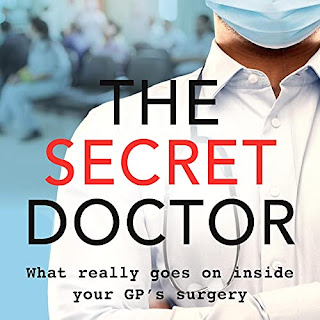 |
| Out with my Loop Wheels |
I recently did a trial of some Loop Wheels.
One thing I regret I not taking any photos while I had them for you to see them better in this review and just for me to look back on.
I tried the Loop Wheels Urban and I was offered to extend my trial and try the LT wheels instead but I turned the offer down as I didn’t see the benefit at the time. (My reasons why below in this review).
I initially went for the Urban wheels as I was guided to them on the ‘Help me choose’ feature of the website as I was going to be using my Loop Wheels with my Batec. That was the whole reason why I was interested in Loop Wheels. They’re a suspension wheel and I thought they’d really benefit me when riding my Batec so I’m being jolted around less which would offer me more comfort and relive my pain especially when going up and down curbs and difficult paths and tactical paving etc. However I personally found that I didn’t get the high suspension relief that I was expecting. I felt some suspension but not much difference to what I get with my Spinergy wheels.
The pink in the photo on the Loop Wheels is my old push rim covers that I put on them as I find the small standard push rims difficult so it was handy that I still had them. Loop Wheels do offer a variety of push rims including the CarboLife push rims with and without Gekko grip. I have the CarboLife L Gekko grip push rims on my GTM chair that I’d highly recommend if you’re going to buy Loop Wheels for every day use.
When I contacted Loop Wheels about the lack of suspension they were really helpful and I explained I used their feature to tell me what Loop Wheels I needed. They explained that for my weight I’d need the LT wheels instead and they can also be used with power add-ons. They did apologise that this wasn’t made clear and the lady explained I’d need the light suspension.
The reason I didn’t try the LT wheels was because I found the Urban wheels quite heavy and the LT wheels were only slightly lighter in weight. I struggled and needed my PA to help me put the Loop Wheels onto my chair every time I wanted to go out on my Batec as my everyday wheels are my Spinergy wheels. I’d still need help with the LT wheels as they still weighed quite a bit. So changing the wheels just for Batec rides was quite a faff. Plus the suspension on the LT Loop Wheels was only slightly more than the Urban wheels. Part of me now though wishes I had gone and tried the LT wheels just to see and try out the suspension but I know that I can always in the future do the £35 trial if I do decide I want to try them out.
I personally felt that the cost of getting the LT Loop Wheels was quite an expense especially considering I was only going to be using them for Batec rides. With a lot of thought I decided to leave the idea of getting Loop Wheels for now and use the money on other things.
In summary:
Pros & Cons
Pros
- Loop Wheels do look amazing
- The trial of the Loop Wheels is a great way to help you decide if they’re for you or not including what wheels are for you (as I found for myself)
- There is a verity of push rim and colour options (alongside the black)
- They have a very of wheels to suite your needs
- The staff are friendly and helpful when you call or email them (I called twice as well as emailed them and the staff were helpful and knowledgeable and eager to help)
- I didn’t feel like it was a push for a sale; they more wanted to let me try out the wheels to get an idea of which ones were best for me.
Cons:
- They are quite expensive wheels - think about if these will be your everyday wheels or just for riding with a power add-on
- The push rims and coloured Loop Wheels come at additional costs, so consider how much they will cost you in total with all the options you want
- The wheels weigh quite a lot more, especially compared to my lightweight Spinergy wheels
- I found it difficult to change the wheels partly because of the weight and also as the Loop Wheels didn’t have an axel pin
- I found little suspension given to me in the Urban wheels - not what I was expecting from what I’d heard about these high suspension Loop Wheels
- The standard push rims aren’t that great (hence me putting on my old push rim covers)
- To switch my every day wheels to Loop Wheels plus add the CarboLife L push rims and Gekko grip would be very costly.
- I felt quite disappointed with the Loop Wheels in all honestly











